The animal kingdom provides so much diversity that it’s almost impossible to keep track of all the different species in the world. Sometimes the distinction between close relatives is too hard to even notice. But different species often evolve in similar ways because of their environment.
We at Bright Side gathered 16 pairs of animals who are almost indistinguishable from each other at first sight in order to show you the differences between them.
1. Jaguar vs leopard
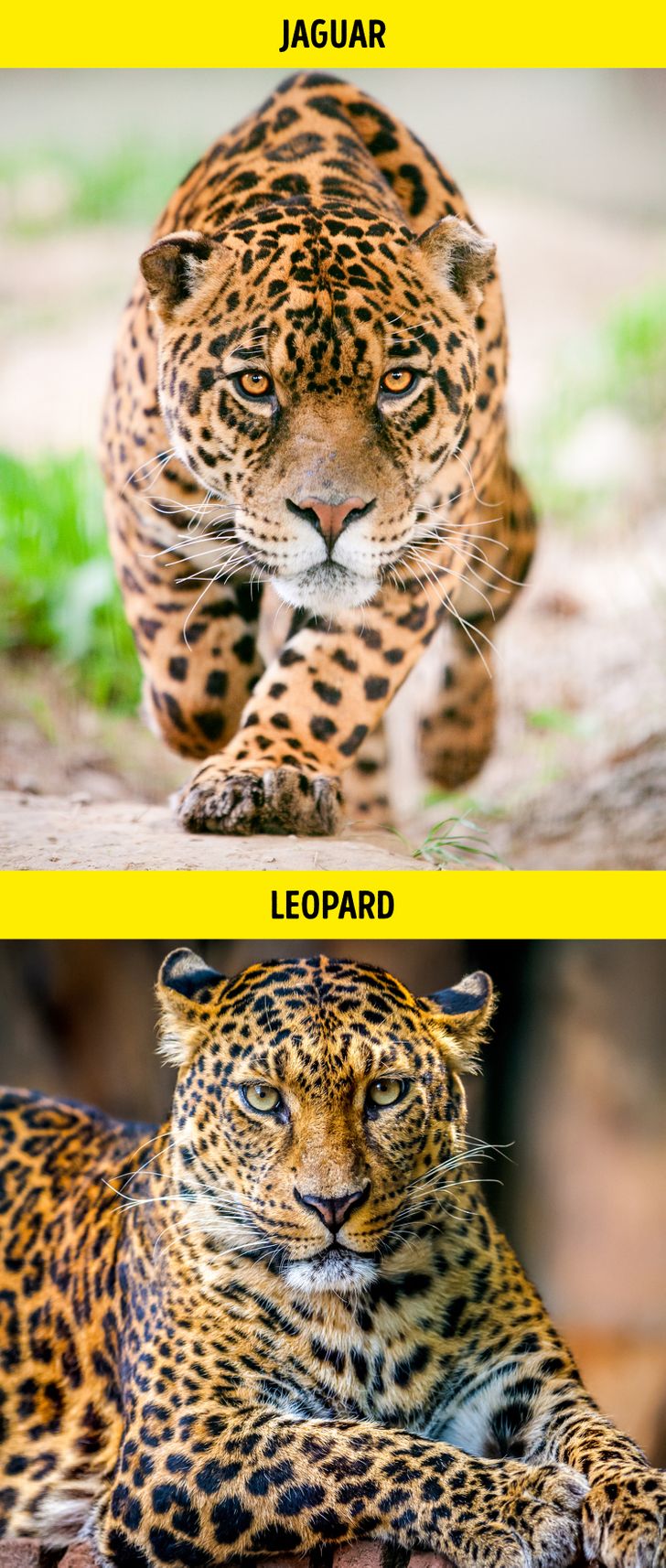
Despite their similarities, these big cats inhabit different continents and climate zones: leopards live in African savannas, while jaguars dwell in South American tropical forests. Jaguars are also larger and bulkier, and unlike leopards and many other cats, they’re fond of water.
2. Alligator vs crocodile
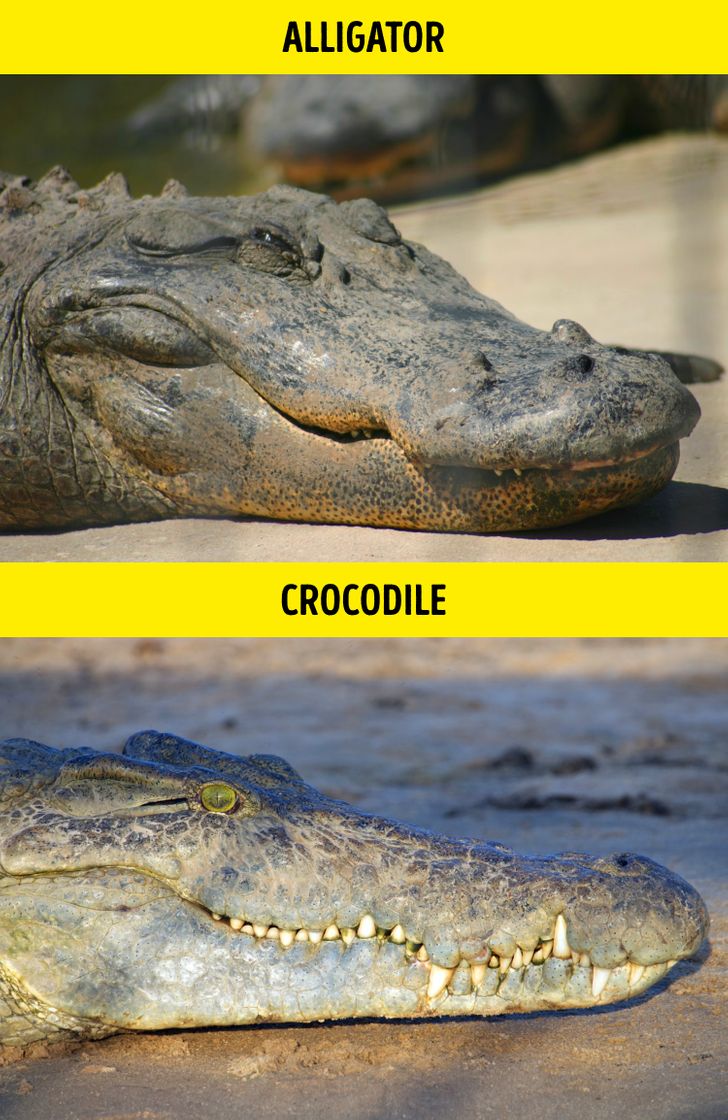
You can easily identify these 2 by the shape of their snouts: crocodiles have prominent, elongated V-shaped faces while alligators have shorter, wider U-shaped ones. Also, consider the teeth: crocodiles display their trademark toothy “grin” with every fourth tooth visible. Conversely, the alligator’s upper jaw is broader than the lower one, so its teeth aren’t visible for the most part.
3. Wasp vs hornet
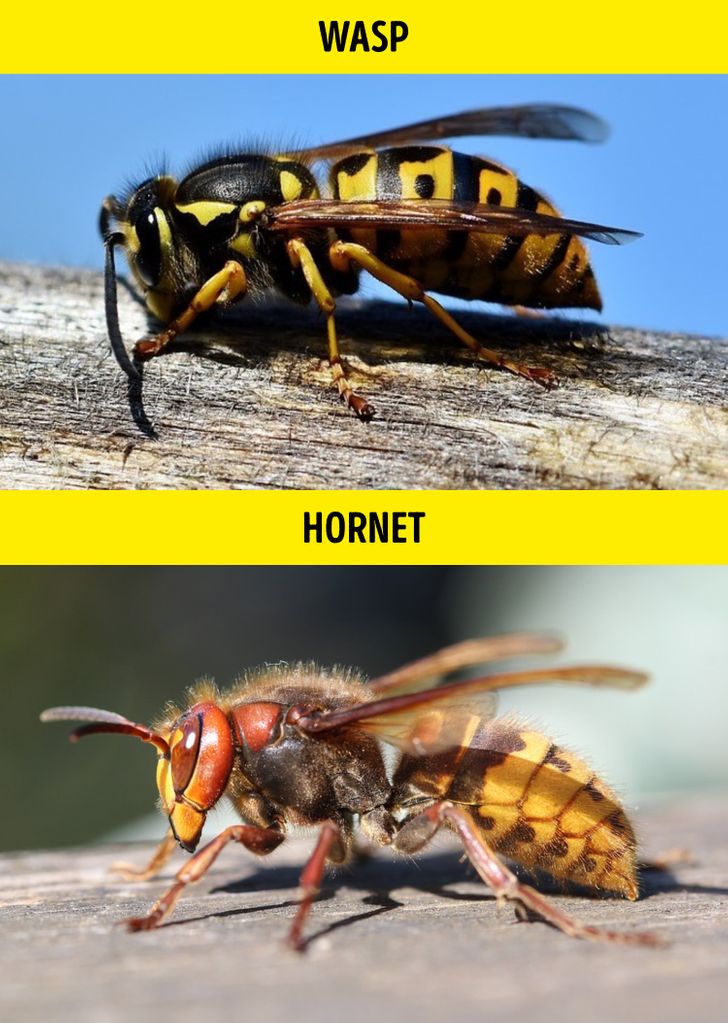
Both insects are menacing, that’s for sure. Hornets are larger and boast orange and black coloring, resembling spots rather than stripes, while wasps are more brightly colored and have yellow and black rings. You’re better off avoiding both.
4. Seal vs sea lion
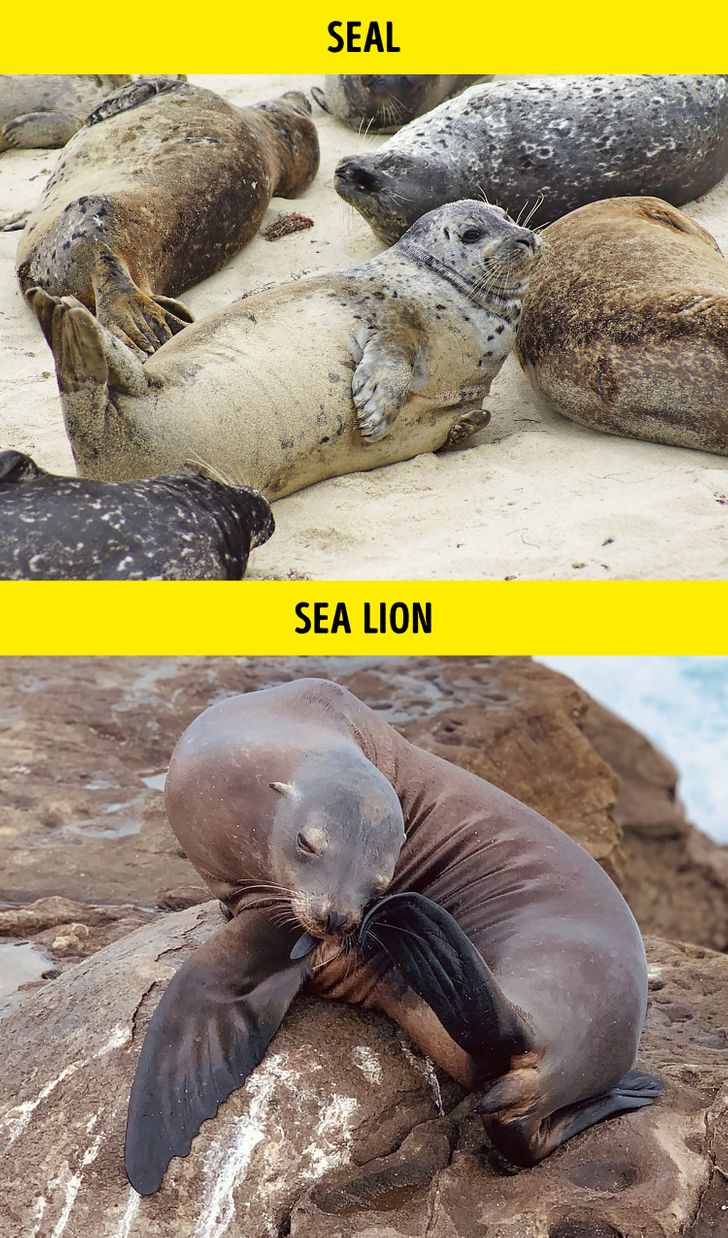
You’ve most likely met seals as cute plushy animals and sea lions as circus acrobats. Seals are covered with fur and have tiny front flippers which prevent them from walking, forcing them to wiggle on their bellies. Sea lions have smooth skin and vast flippers that they use to move on the ground.
5. Turtle vs tortoise

These 2 are both mobile (but very slow at that) and boast 4 legs. But the “turtle rock” is aquatic and has markings that resemble stains and circles on the water to better hide in the ponds. The “tortoise rock” is a land animal and spends most of its time on the ground — that is, as a literal rock.
6. Raven vs crow vs rook vs jackdaw
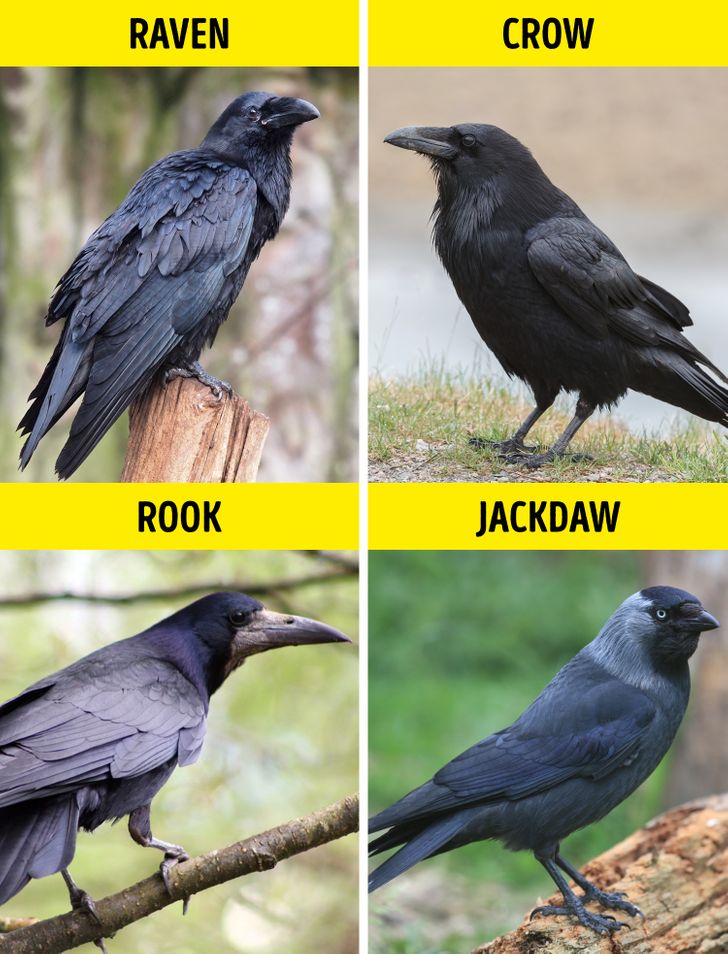
Most corvids look fairly similar (excluding jays who are like a theatre kid in a goth family). Ravens are the loftiest and most fashionable thanks to their “beard” of throat feathers. Crows and rooks are of the same size, but rooks have a distinct grey beak and fancy feather “pants” on their legs. Jackdaws are the goofiest-looking thanks to their very short beaks and a round heads with black caps.
7. Donkey vs mule
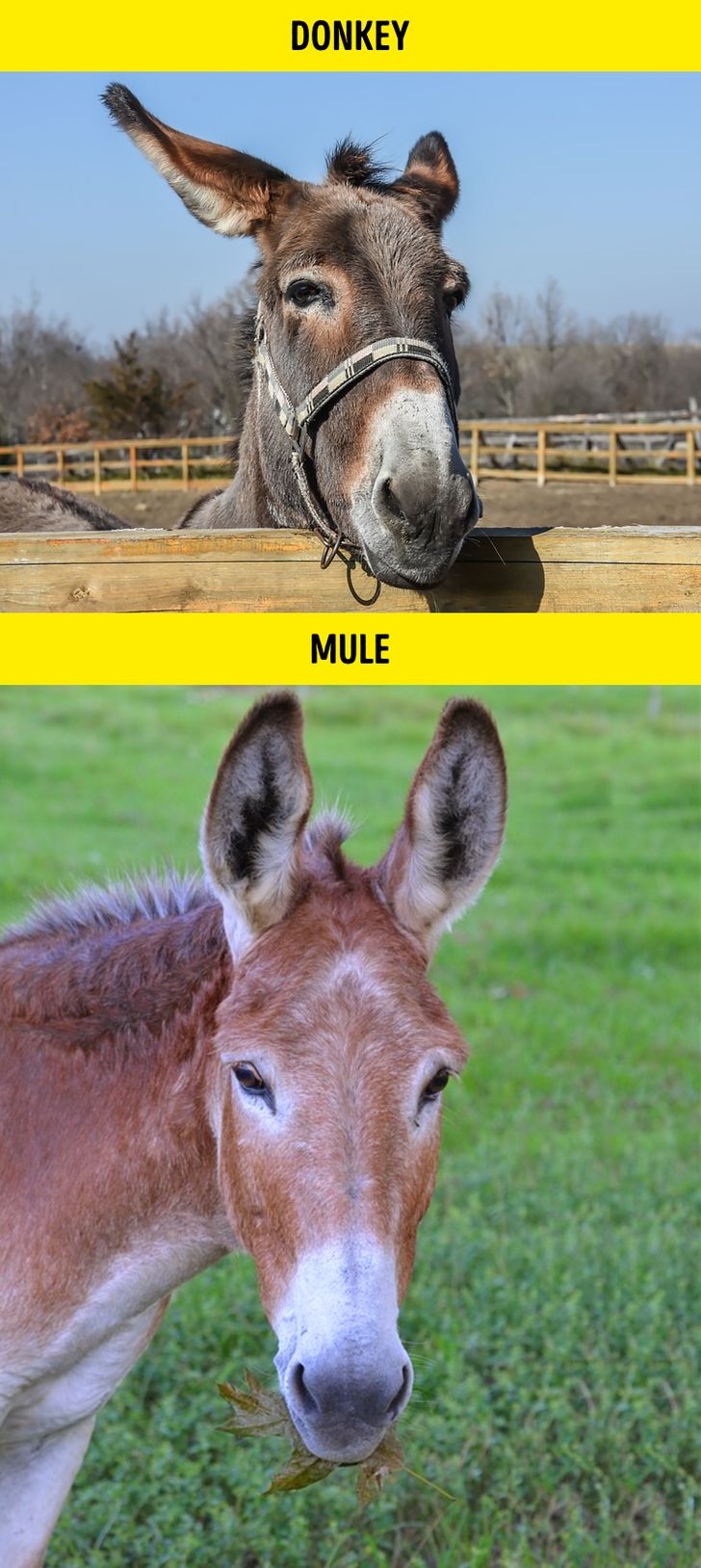
This one is tricky for a simple reason: while the donkey is its own species, a mule is a hybrid of donkey and horse. Funnily enough, it looks exactly like what you’d think these 2 animals would look like: an elegant head of a horse with ridiculously oversized donkey ears.
8. Hare vs rabbit
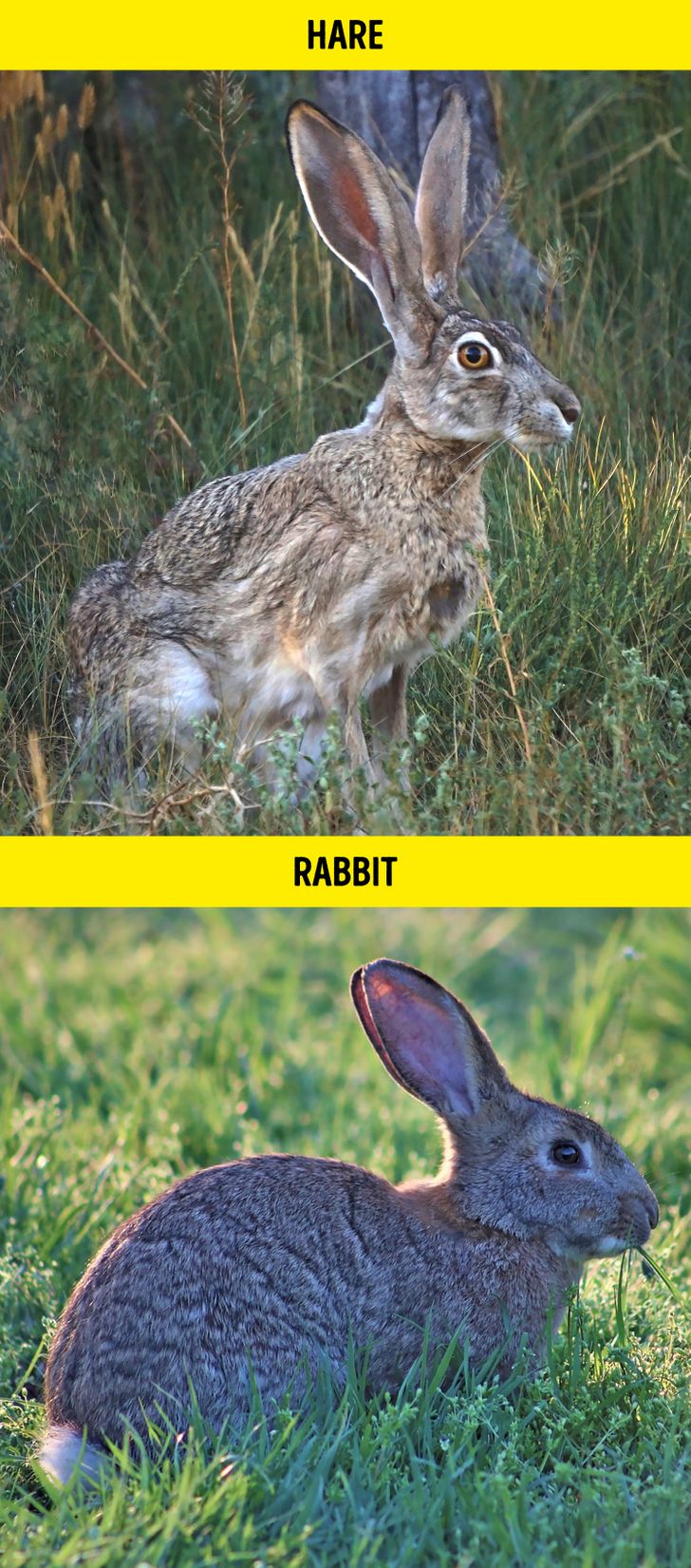
If you want a cuddly little pet, a rabbit is your best bet, but a hare definitely is not. Hares are larger and faster and have longer legs and ears. Rabbits are smaller, fluffier, and overall “cuter.” They even eat different food: rabbits prefer vegetables (like carrots) and soft grass while hares prefer bark and twigs. Rabbits are social animals while hares tend to be solitary. It’s no wonder rabbits are easily domesticated while hares mostly stay feral.
9. Moth vs butterfly
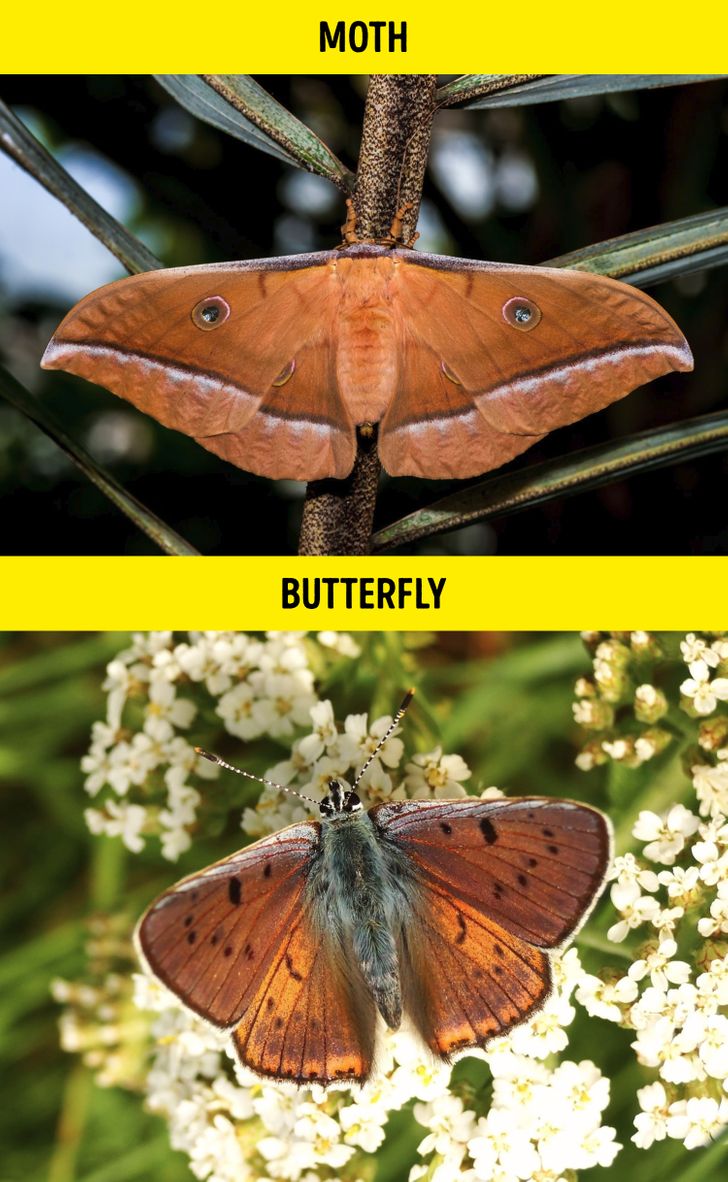
Moths have tent-like wings while butterflies flap their wings vertically. Moths usually rest with their wings open, while butterflies rest with their wings closed. Their antennas also differ: butterflies’ are long and thin and moths’ are short and feathery. Butterflies are strictly diurnal, while moths are mostly nocturnal.
10. Dolphin vs porpoise
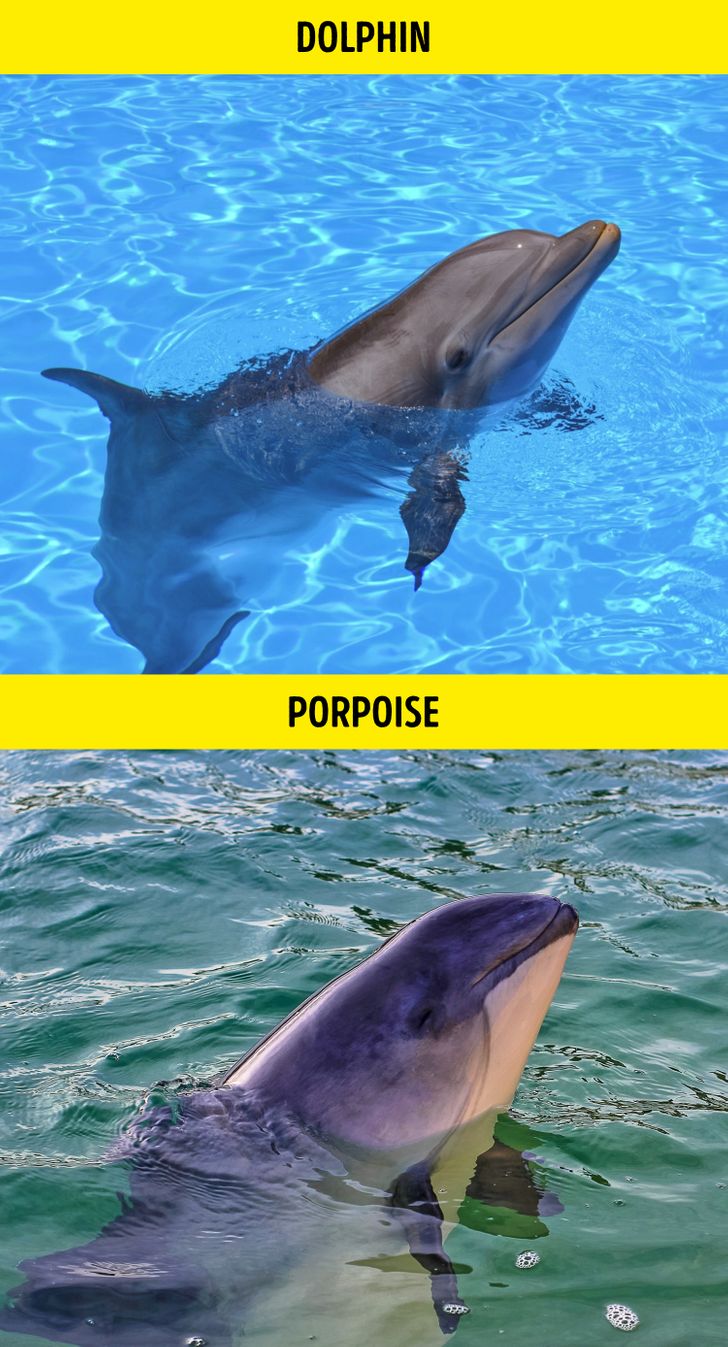
The difference between dolphins and porpoises comes down to their snouts, fins, and figures. Dolphins have long “beaks,” slender bodies, and curved dorsal fins. Porpoises have more flat, sloping faces, smaller flippers, and shorter triangular dorsal fins.
11. Weasel vs stoat
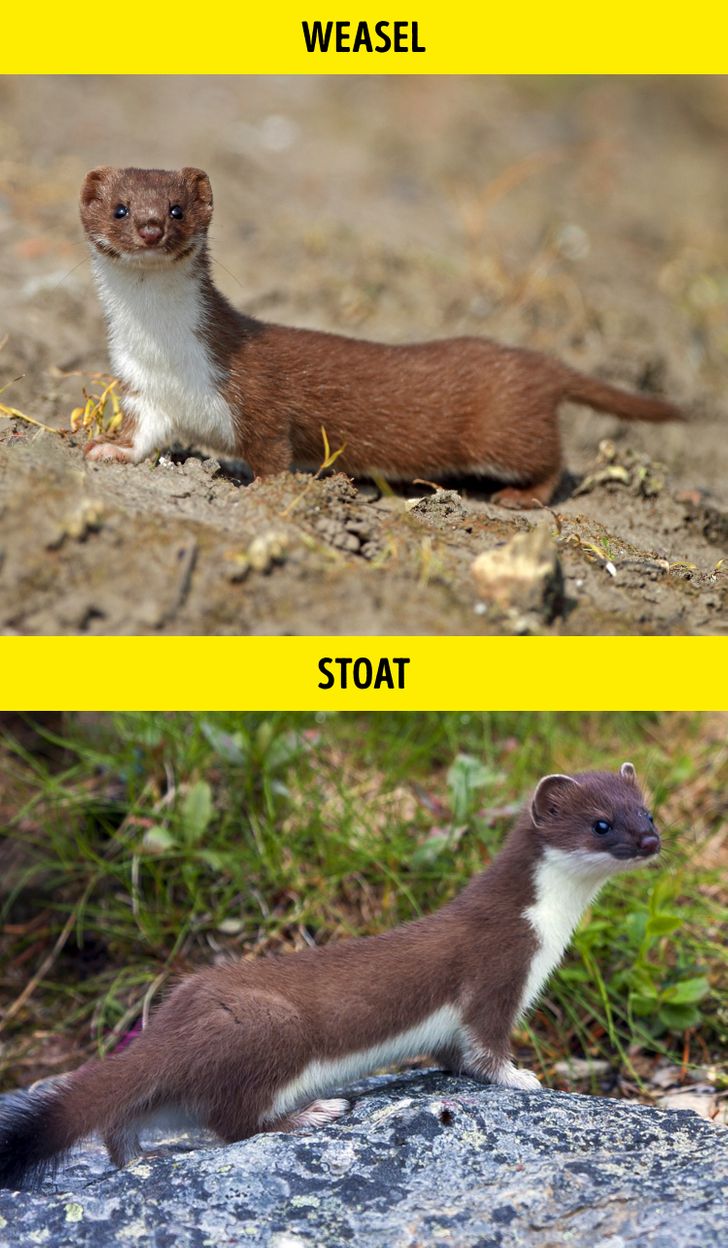
These 2 animals are close relatives. Stoats are bigger and have long tails with fuzzy black tips, while weasels’ tails are short and of the same color as the rest of the body. Stoats move in a bouncing gait with an arched back which looks hilarious, and weasels keep closer to the ground. Stoats also turn white in winter.
12. Eagle vs hawk vs falcon
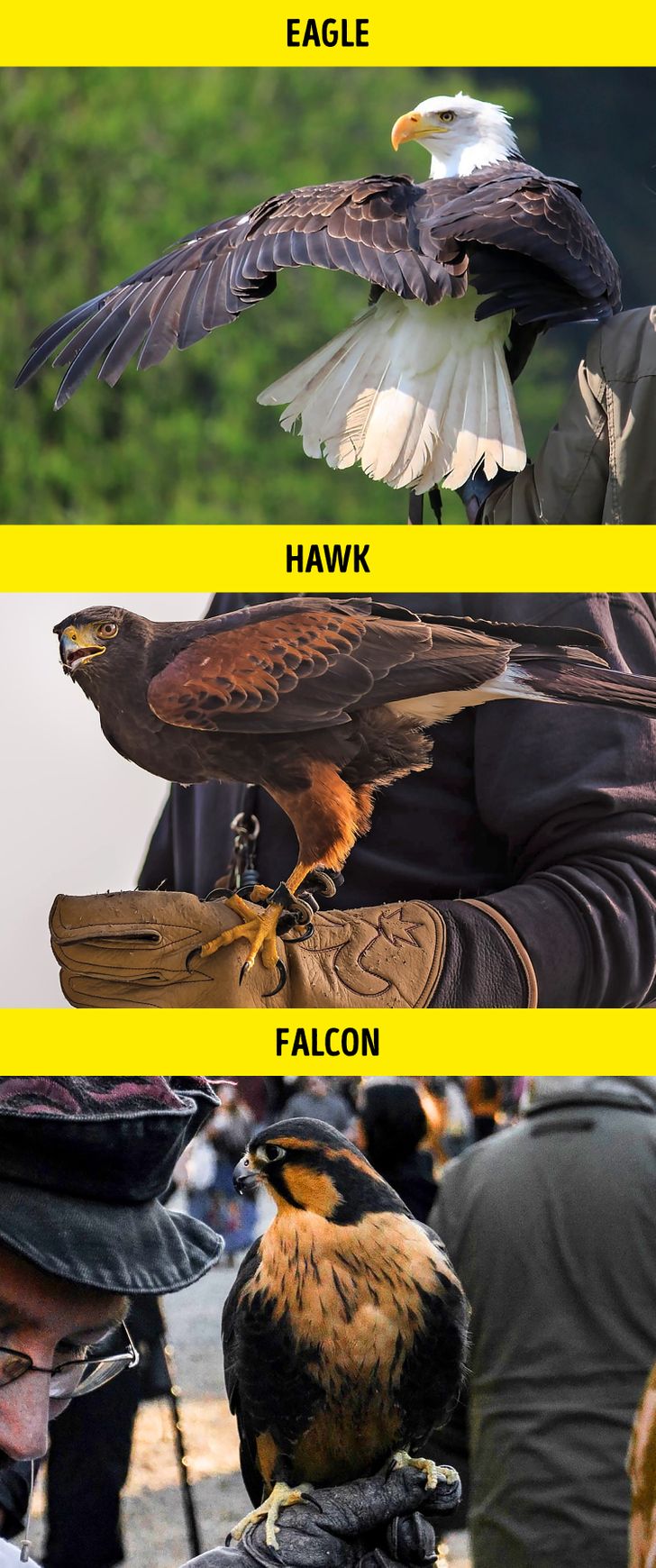
Eagles are gigantic, powerful birds who prefer to live in open spaces like cliffs and mountains. Hawks are a little smaller and more nimble in the air, capable of maneuvering in more closed areas. Falcons are the smallest and fastest of the 3 and differentiate the most visually: they have larger eyes and shorter beaks.
13. Mouse vs rat
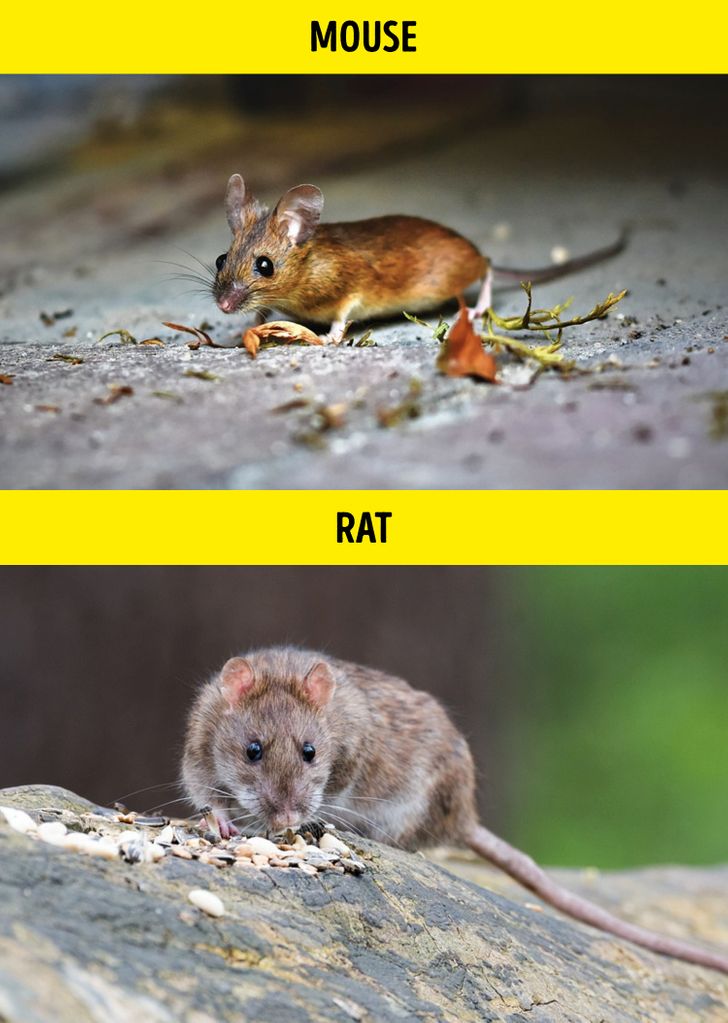
The 2 most famous (or infamous) rodents can be easily distinguished by 3 things: their size, tail, and ears. Mice are diminutive, even compared to young rats; they have thin long tails covered with fur while rats’ tails are thick and hairless. Mice have ears that are bigger in proportion to their bodies and are round and floppy with a tiny, triangular face. Rats’ faces are more prominent and blunt.
14. Seagull vs albatross
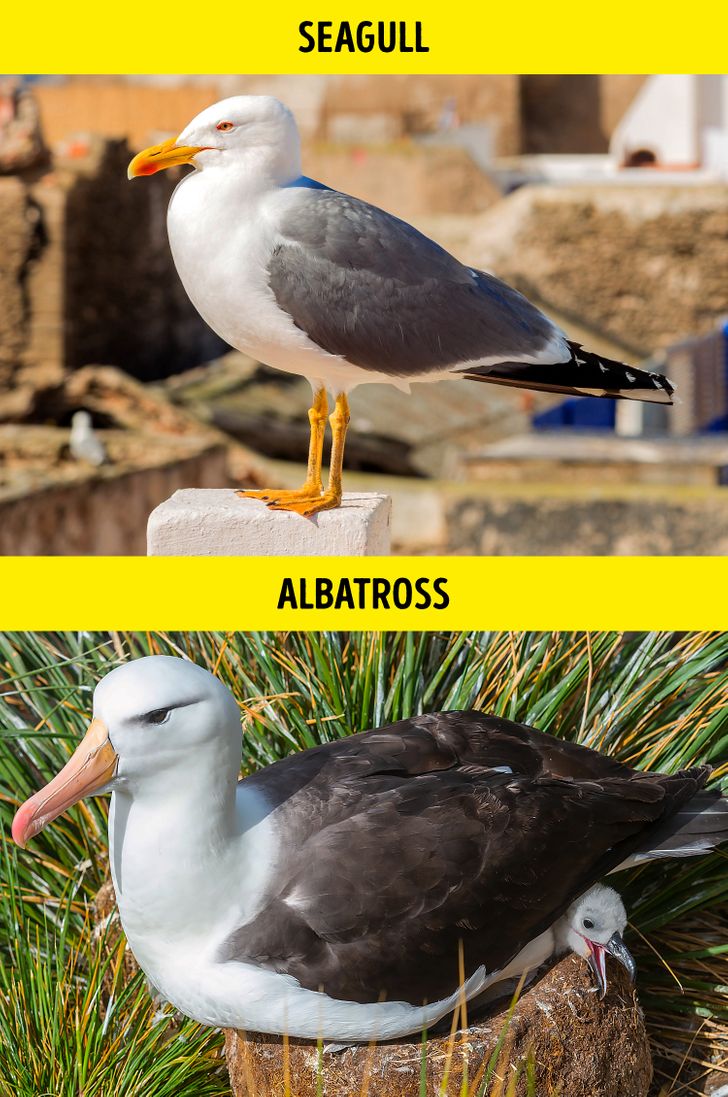
Gulls often live near water, be it the sea or ponds, and are rather acrobatic while diving and fish-catching, but aren’t fans of long voyages, unlike albatrosses. Albatrosses are portly birds who live in constant flight over the sea. They even have unique nostrils that allow them to remove salt from water and food.
15. Wolverine vs honey badger
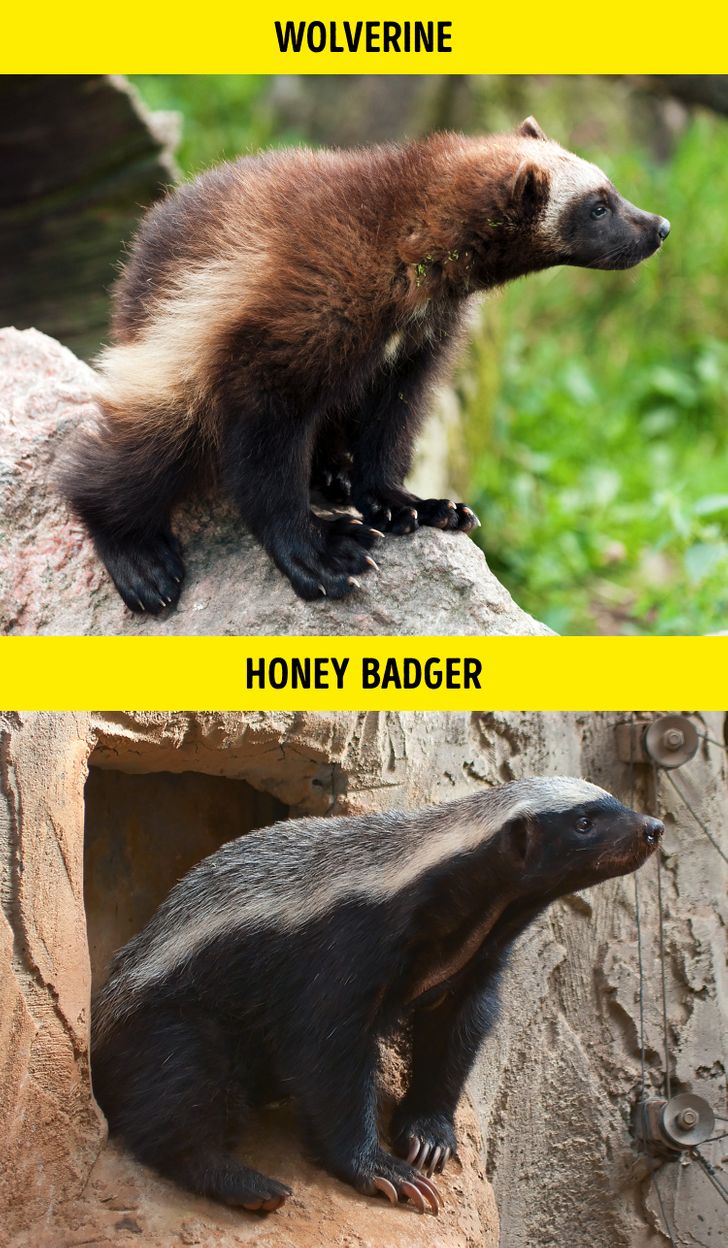
Despite living in different climate zones — the honey badger that lives in Africa and the wolverine that resides in the northern forests — both belong to the Mustelidae family. Wolverines are taller with longer legs and noticeable ears and have brown fur with yellow rings. Honey badgers keep closer to the ground and have black bodies with a white “cape” on their backs.
16. Wolf vs coyote vs jackal
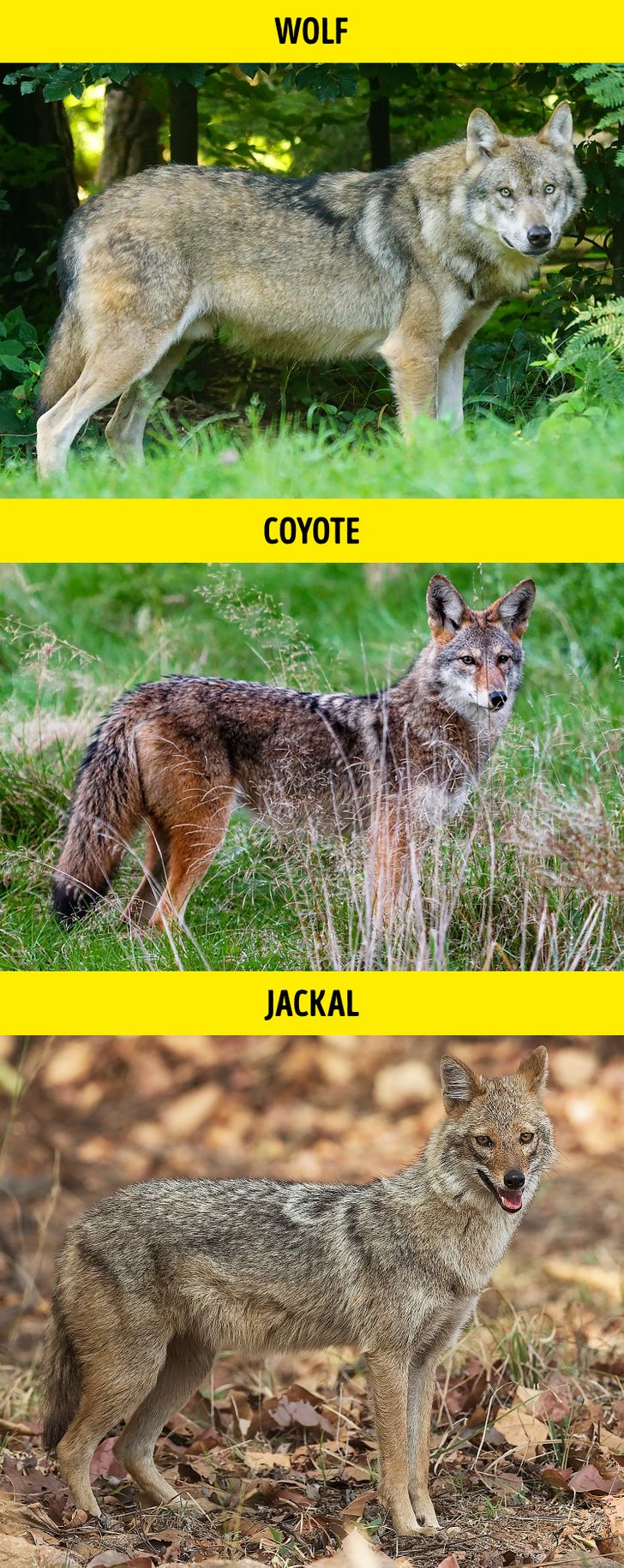
These 3 are “good boys and girls” that parade all over the globe. Jackals live in Africa, Asia, and India; coyotes live in Northern America; and wolves live all over the place. Wolves are large, sturdy animals, while coyotes and jackals possess a more lean and fragile frame.
Coyotes are recognizable for the red fur on their faces and ears while jackals have a more yellow-colored coat. Additionally, jackals are noticeably less fluffy because they don’t have to endure the harshness of winter.
Funny bonus: Wolverine vs the honey badger
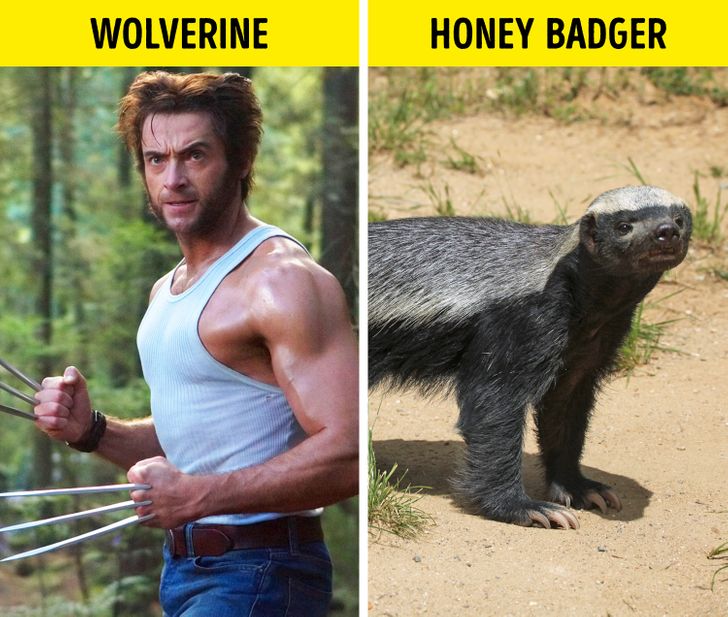
What kinds of animals have ever confused you? If you know more examples, share them in the comments!
Preview photo credit shutterstock.com, shutterstock.com
I Bought Food for a Homeless Man, He Stunned Me with His Confession the Next Day
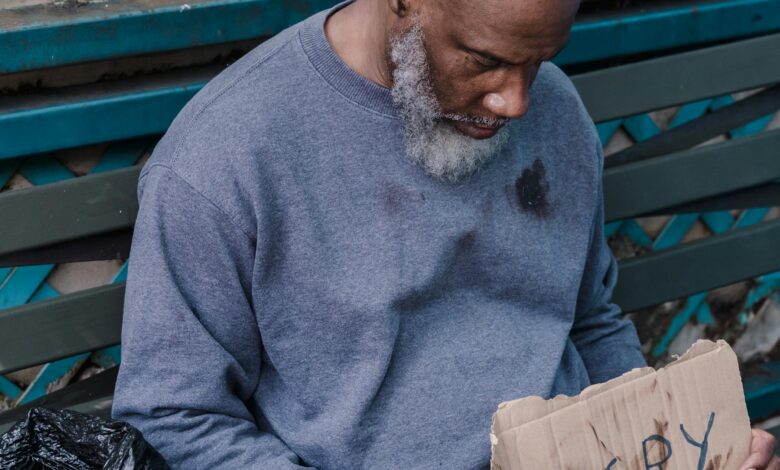
This story captures the profound ripple effect of kindness, how a simple, heartfelt act can light up a path for someone who’s lost in the dark. It’s beautiful that Greta’s small gesture, something as seemingly ordinary as a meal, became a turning point for Morgan. Her compassion gave him the courage to reconnect with his purpose, to confront the trauma he carried and find a way back to service, this time as a mentor to others who need the guidance he once lacked.
Morgan’s gesture of returning with milk for Greta’s kids is such a touching symbol of his gratitude and humanity. Despite everything he’d lost, he wanted to give back, to reciprocate that kindness in the way he could. And his message—“Keep teaching kindness, Greta. It saves lives”—is a reminder of the impact we each can have, often without even realizing it.
It’s one of those encounters that reminds us of the shared struggles beneath the surface and how reaching out, even just with a meal, can reignite hope. The story is a testament to resilience, the strength of community, and the way kindness can heal even the deepest wounds.



Leave a Reply